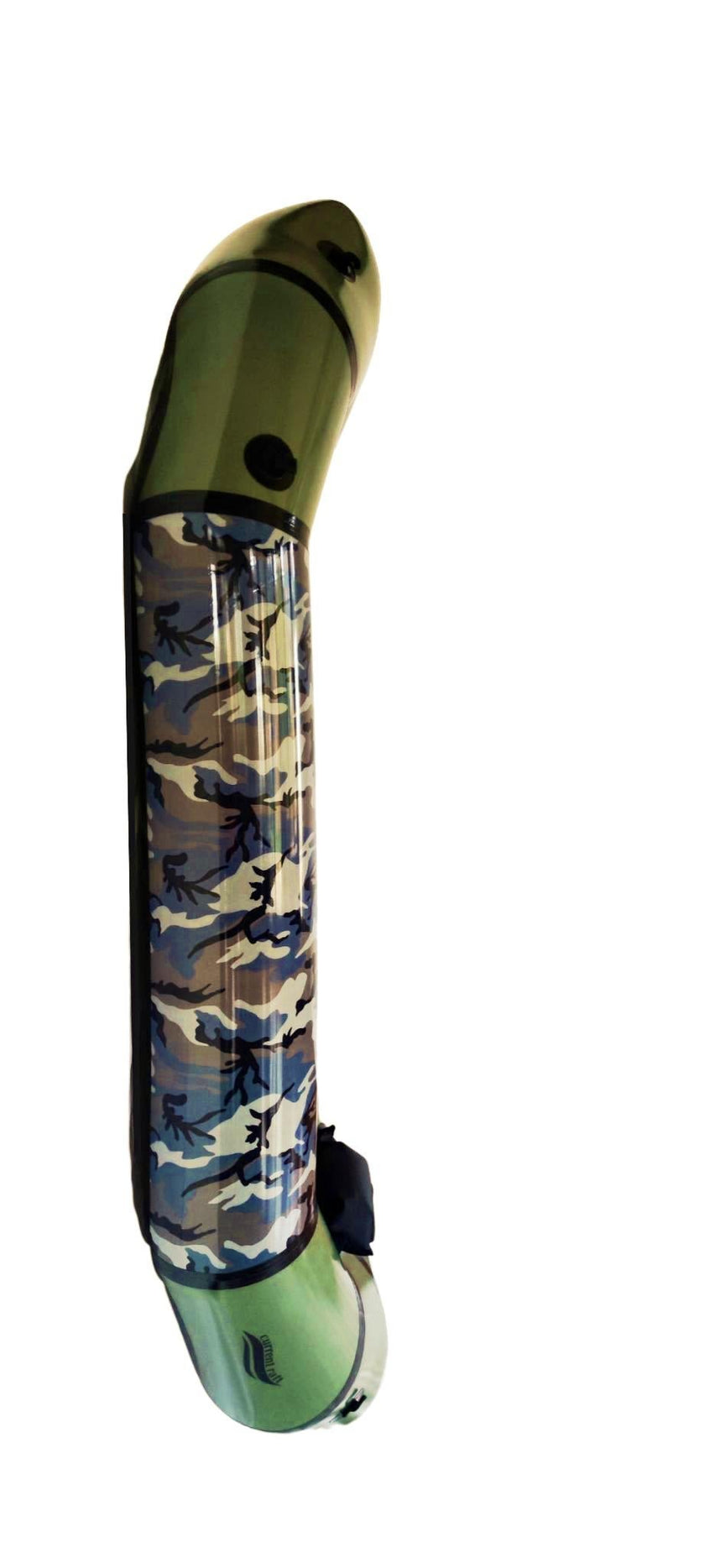Current Raft Nature










Description
Do you want to get on the water quickly and easily at any time? Don't always be seen by others right away because you're looking for proximity to nature and animals?
The Current-Raft Nature is the right Packraft for you. In addition to the usual good workmanship, it impresses with an unbeatable price-performance ratio.
Product information
First and foremost: the Current-Raft Nature is a real price-performance winner! Because you get a full-fledged, high-quality package, with proven, robust materials, at an extremely affordable price. But the Current-Raft Nature doesn't just impress with its price: the packraft offers enough space, even for larger paddlers, has a good load capacity and, thanks to its symmetrical design, very good-natured paddling behavior. It is also light and compact, and can be inflated very firmly with the mouth using a revised valve. The color scheme in green and camouflage allows it to remain undetected in nature for a long time, which is particularly appreciated by wild campers, photographers, city paddlers, hunters and fishermen. For these customer groups, as well as newcomers to the sport of packrafting, this packraft is a great choice and alternative to thin-skinned discount packrafts.
Dimensions
- External length: 210cm
- Inside length: 135cm
- External width: 87cm
- Inner width: 37cm
- Hose diameter: 25cm
- Load load: 150kg
- Pack size (approx.): 12l
Weight
- Packraft 210D hoses/840D base: 2000g (including all fasteners and valve)
- Backrest: 60g
- Seat: 290g
- Inflation bag: 140g
- Carry bag (optional): 300g
- Fin (optional): 130g
- Bow bag 40l (optional): 450g
Materials
-
Tube material: 210D TPU nylon (0.32mm) with urethane coating
-
Soil material: 840D TPU nylon (0.65mm) with urethane coating
-
Seams: 840D TPU Nylon
-
Valve: Dual function, check valve made of PVC
Attachment points
- 2 fastening loops at the rear
- 4 fastening loops on the bow
- For the optional installation of the rear foam backrest, which is available as an additional accessory, two D-rings must be ordered and installed
Scope of delivery
- Packraft
- Inflation bag
- Seat
- Backrest inflatable
- (Foam backrest with pocket for an additional charge)
- Repair patches
What length do I need?
The decisive factor for the correct packraft length should be the length of the paddler's legs. This is best measured while sitting. To do this, sit on the floor against a wall in a comfortable paddling position and measure the distance from your tailbone to your heel. Remember that clothing and paddling shoes affect your measurement by a few centimeters, or measure directly in paddling clothing. For good contact and control over your packraft in the water, you should fill the interior length as much as possible. Of course, the possibility of extra storage space in the bow can also lead to a decision to go for a slightly longer size. We would be happy to advise you on this at any time!
Additional information
- We recommend using the inflation bag to inflate and applying the remaining pressure to the packraft with your mouth. This procedure ensures sufficient pressure in the tubes and protects the material. If a pressure pump is used for inflation, we recommend not exceeding the pressure of 0.08 bar or 1.2 PSI.
- The packrafts can be used without restrictions in salt water or chlorinated pools. In this case, however, you should make sure to rinse off any salt or chlorine residue thoroughly before storing.
- The packrafts should always be stored dry and dust-free. The latter is especially important when using a TZIP storage system. A dry, well-ventilated room without direct sunlight is best for storage. After you get home from your paddling trip, let your packrafts dry thoroughly when inflated. Pay particular attention to moisture between the edges. The packraft can be rolled or folded very small without causing any damage. The coaming can also be double wrapped and put together without any problems.
Safety instructions
- Non-swimmers do not belong in a packraft. Anyone who takes non-swimmers out on the water carries a high risk.
- If possible, do not paddle alone. Always leave where and until when you plan to travel.
- Take water sports and safety courses with certified trainers.
- Inquire about the dangers of the water - water levels, ebb and flow, currents, weirs and weather conditions. We strongly advise against driving during floods.
- Avoid weirs, power stations and dams of all kinds. There is often a danger to life here, so it is recommended to carry them over a wide area.
- Take first aid and rescue equipment with you on the water.
- Wear clothing appropriate for the weather. Cold weather and water can cause hypothermia.
- Assess your ability correctly and plan tours according to the weakest group member.
- Keep your distance from other water users, especially all motor ships and sailing vessels. Packrafts almost always have to give way and are difficult to see by the skipper.
- Observe the inland waterway and sea shipping regulations. They apply to all shipping lanes and canals and contain binding rules for all watercraft.
- Put on a life jacket or, on large bodies of water, a fainting-proof life jacket and head protection. When whitewater rafting, wear a cold-weather suit and a helmet.
- Particular dangers exist on white water and on the coast. These waters can only be navigated with special equipment and by experienced paddlers, ideally with expert guidance and local guidance.
- The emergency exit from the packraft should be practiced. We recommend practicing quick exits on land, in the pool or under supervision.
- In the event of additional modifications to the packraft, getting in and out must not be impaired.
- Getting back on the water should be mastered safely before navigating open water or white water.